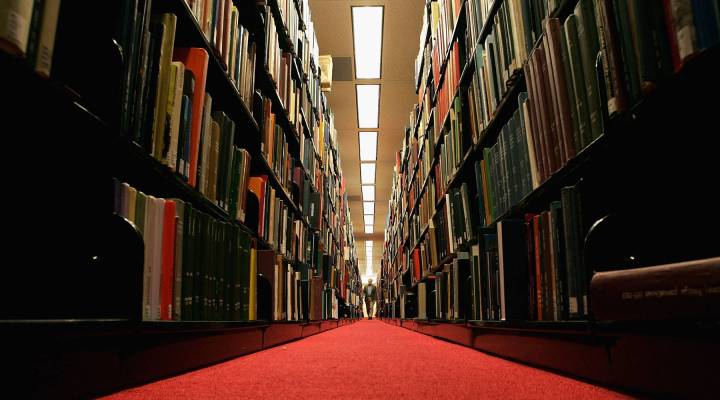
Are summer reading lists a matter of class?

You remember the summer reading list? If you live in certain parts of the country, you probably do. That photocopied list of books assigned by a teacher – with instructions to read one, two, or, if your teacher was tough, the entire list.
On the Wealth and Poverty desk, we wondered whether children who go to public schools in lower-income areas are assigned markedly different books than children who live in higher-income school districts.
It turns out the answer isn’t easy to find. There are no national standards for summer reading, which means that every school and/or school district in the country handles the issue differently. Some schools make their own lists, some choose from a pre-approved district-wide list and others have no reading lists at all.
So here’s a sampling of what we found — with two caveats. First, this is an unscientific survey. Many teachers are off on summer vacation, so we relied largely on reading lists that schools and districts posted on the internet. It would have been wonderful to look at every school in the nation, but we didn’t have nearly enough time for that. Secondly, we’re not judging books. We’re not pitting John Grisham against Dave Eggers and we’re not making value judgements about what schools assign. We’re just seeing if we can spot differences…
Also, these are just part of the lists for schools, not the full list.
Darien, Connecticut (Median household income (2011): $193,000)
Darien’s one of the wealthier areas in the country.
Summer reading list, which includes dozens, is broken down by categories:
- Biography (“The Art of Power by John Meacham”)
- Art (“Leonardo and the Last Supper” by Ross King)
- Contemporary Fiction (“Salvage the Bones” by Jessmyn Ward)
- Mystery (“The Bourne Identity,” by Robert Ludlum)
Jackson Public School District in Mississippi (Median household income: $34,000)
Summer reading list is one required book for each grade.
- Seniors: John Grisham’s “The Runaway Jury”
- 11th-graders: Maya Angelou’s “I Know Why the Caged Bird Sings”
- 10th-graders: Sue Monk Kidd’s “The Secret Life of Bees”
Yonkers Public Schools in New York (Median household income: $56,000)
Yonkers students have it tough. They are required to read four books over summer break (and maintain a reading log!).
Part of the summer reading list for a 10th grader:
- Michael Lewis’ “The Blind Side”
- John Green’s “The Fault in Our Stars”
- Cormac McCarthy’s “The Road” (In Framingham High School in Masachusetts “The Road” is a 12th grade summer read.)
Brookline High in Massachusetts (Median household income: $97,000)
Summer reading is recommended, not required.
Seniors choose from books like:
- “The Reluctant Fundamentalist,” by Mohsin Hamid
- “Cutting for Stone,” by Abraham Verghese
- Colum McCann’s “Let the Great World Spin”
Worcester High in Massachusetts (Per capita income: around $46,000)
Reading is required, but not broken up by grade level.
Students choose three books from categories that include:
- Action/history (“Blackhawk Down,” by Mark Bowden)
- Science fiction/fantasty (The Lord of the Rings series)
- Sports (“Friday Night Lights” by Buzz Bissinger)
Many schools across the country seem to assign mandatory summer reading only to students who are taking Advanced Placement classes. In Valdosta, Georgia where the median household income is around $31,000/year, AP students at Valdosta High must choose two books from a list that includes “Beloved” by Toni Morrison, “Nickel and Dimed” by Barbara Ehrenreich and Richard Wright’s “Native Son.” But students who aren’t in AP English aren’t required to read — it’s only suggested that they do. Their list includes “The Fault in Our Stars,” “The Girl of Fire and Thorns” by Rae Carson and “The Good Braider” by Terry Farish.
Here’s what we heard from a few teachers throughout the country.
Teacher: Zanetta Robinson | 8th & 9th grade | Language Arts & English
School: Thurgood Marshall Fundamental Middle School in St. Petersburg
Reading list: As of this year, reading lists have been eliminated, but Ms. Robinson recommends students read high-interest narrative non-fiction like Thomas B. Allen’s “Harriet Tubman, Secret Agent: How Daring Slaves and Free Blacks Spied for the Union During the Civil War,” and “George Washington, Spymaster: How the Americans Outspied the British and Won the Civil War.”
Teacher: Jennifer Ochoa | 8th grade
School: Patria Mirabal Middle School in Washington Heights, New York City
Reading list: The school no longer has a summer reading list because educators found that kids weren’t doing any of the reading. So, Ms. Ochoa (who admits she loves reading James Patterson at the beach to relax) recommends action-packed novels like S.E. Hinton’s “The Outsiders,” and the books of Walter Dean Myers, who writes about Harlem and Washington Heights — areas her students are familiar with.
We’d love to hear more from teachers, students and parents. If your district or school assigned a summer reading list that you’d like to share, feel free to pass it along!
There’s a lot happening in the world. Through it all, Marketplace is here for you.
You rely on Marketplace to break down the world’s events and tell you how it affects you in a fact-based, approachable way. We rely on your financial support to keep making that possible.
Your donation today powers the independent journalism that you rely on. For just $5/month, you can help sustain Marketplace so we can keep reporting on the things that matter to you.












